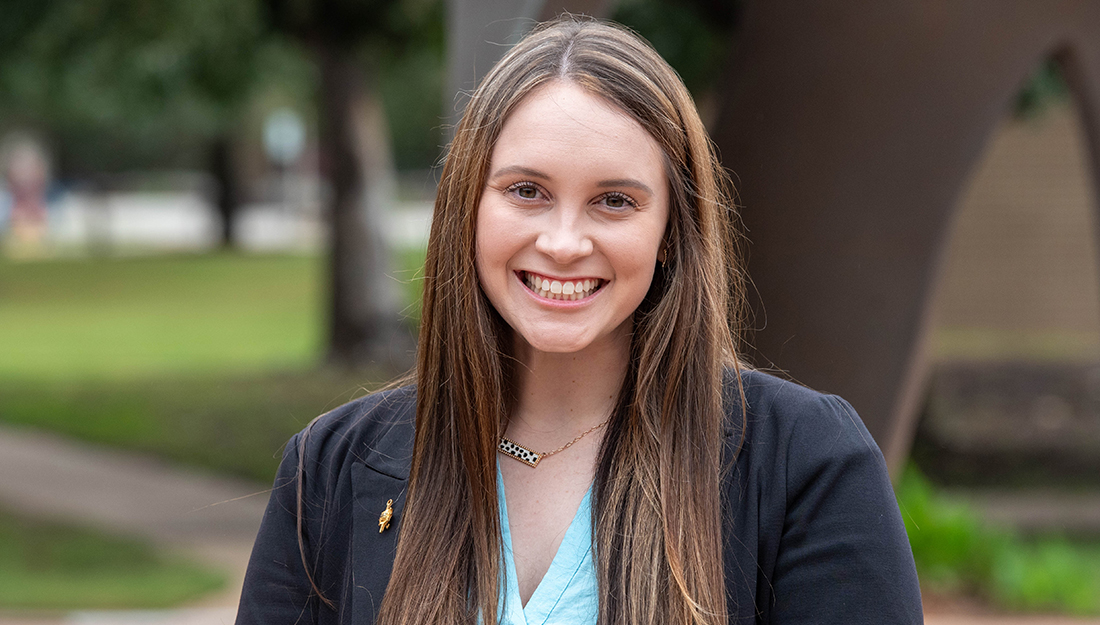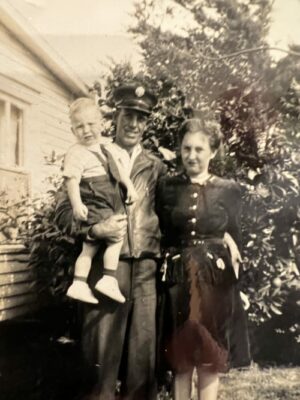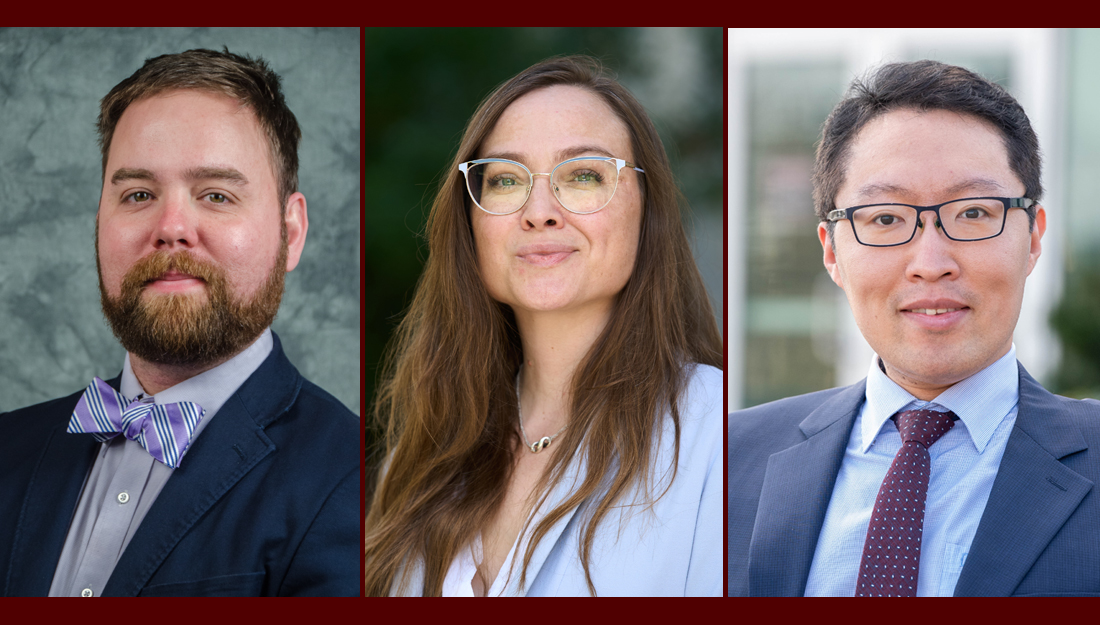Family’s link to the deadliest industrial accident in US history leads student to public health

The Texas City explosion that killed at least 581 people in 1947 has ripple effects even today. Regularly discussed in Texas A&M University School of Public Health courses, the deadliest industrial accident in United States history also carries special significance for Emily Findeisen ‘21 ’23, who will graduate in December with a master’s degree in public health with a concentration in occupational health and safety.
The catastrophic event started when a fire broke out on SS Grandcamp, detonating the ship’s cargo, which included ammonium nitrate and ammunition. The explosion set off a chain reaction that destroyed the seaport in Galveston Bay where the ship was docked, causing a 15-foot tsunami and a shockwave that leveled nearly 1,000 buildings, and resulted in fires and explosions aboard other ships and nearby chemical plants and oil-storage facilities. More than 5,000 people were injured and nearly 600 people were killed, including all but one member of the Texas City’s volunteer fire department. One of the firemen who died that day was Findeisen’s paternal great-grandfather.
That day’s events continue to weigh heavily on her family. “Both my grandpa, who was three years old at the time, and his older brother were playing outside that day,” Findeisen said. “Both brothers recall hearing and feeling the explosion. They vividly remember the panic and fear that ran through them at the moment.”
A historical catalyst
The Texas City disaster also has continued to resonate with Findeisen’s studies at Texas A&M. Initially, the Corpus Christi, Texas, native started as a biomedical sciences major and planned to be a veterinarian.

“After taking the first semester of biochemistry, I realized I really didn’t want to take the second one,” she said. “After weighing the different opportunities available at Texas A&M, I decided to switch my major to public health in fall 2020.”
Findeisen started coursework in the Department of Environmental and Occupational Health in her senior year, enrolling in the accident investigation course. The course’s first lecture focused on big industrial accidents, including the Texas City disaster.
“I smiled and thought, ‘God has a plan for why I’m here,’” she said. “I remember calling my grandparents and saying, ‘Guess what was in the lecture today?’”
She also began considering the role of public health in protecting workers like her great-grandfather after taking a course called Human Factors in Ergonomics Health and Safety from Adam Pickens, PhD, MPH.
“Honestly, I saw ‘ergonomics’ and thought it was a fancier economics class,” she noted, laughing. “I walked in the first day and learned that ergonomics was not economics. That course helped me see that occupational health and safety was more than just OSHA regulations. There was the human factor as well as the biomechanical and the design parts that could prevent future injuries of workers.”
Committed to protecting workers
Realizing that the field incorporated her previous studies and her passion for people, Findeisen then took master’s degree courses in Spring 2022. Soon, she found herself diving into the Texas City tragedy again, thanks to an ergonomics course taught by Mark Benden, PhD, CPE. A class project asked students to analyze a relative’s job and its inherent risks. She chose her great-grandfather’s role as a volunteer fireman and longshoreman.
“Those workers had to lift lots of heavy loads, so there was a huge potential for injury,” she said. “I had an opportunity to really dive into what his day-to-day may have looked like. Additionally, I was able to see the advances in technology since then that have relieved the loads, so the job isn’t as stressful on the body of the workers.”
A hazardous materials and compliance course also helped her dive deeply into the lack of regulations at the time of the disaster.
“The Environmental Protection Agency (EPA) and the Occupational Safety and Health Administration (OSHA) had not yet been formed or created at the time of the disaster,” Findeisen explained. “Therefore, there were no standards or regulations concerning hazardous chemicals, like ammonium nitrate, and how you handle them. Luckily nowadays, we do have these standards and regulations, and we know how to manage hazardous materials, especially when there is a fire.”
The chance to explore the Texas City disaster didn’t end there. Findeisen received an internship with Marathon Petroleum in Summer 2023—and her posting took her to Texas City.
“My first true entry into the field was just a few blocks from where my great-grandfather was during the explosion,” she said, adding that her work focused on industrial hygiene, including noise, ergonomics and chemical sampling.
Findeisen credits the School of Public Health for her career preparation and the opportunity to work on a number of research projects, assist in the Ergonomics Center, and participate in projects with industry partners.
Now as she begins her career as a safety professional with Marathon Oil in Kenedy, Texas, Findeisen is committed to helping workers stay safe.
“I don’t want their families to go through what my family went through,” she said. “I want them to be able to clock out and go back home to their family at the end of the day. That didn’t happen to my great-grandfather, and I see the effects.”
Media contact: media@tamu.edu


